The Aloha Blog, Part 2: Moloka`i
“Slow down…this is Moloka`i”
First of all, this being December 7th, I would like to point out a second national tragedy that occurred at Pearl Harbor while I was actually there:
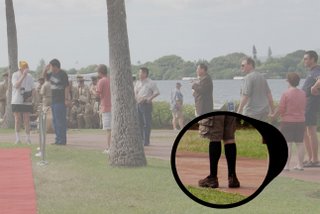
But I digresss…
The flight to Moloka`i is just 20 minutes on a small plane; but from the time you board the flight you know you’re headed someplace different. Although there are only about 30 people on the flight, many of them know one another (and the flight attendant) well enough to share stories and pictures and family updates.
Moloka`i is one of the smallest islands, and the least visited by tourists. In fact, just about any hotel on Waikiki has more rooms than the entire island of Moloka`i. There isn’t even a single traffic light. But it’s called “The Friendly Island” for a reason: the “Aloha spirit” pervades here more than anywhere else. Everyone waves and smiles, whether passing on the street or on the highway. It’s also the most “Hawaiian” of the islands: about half the people here have Hawaiian blood, and many speak Pidgin—a hybrid of English and the Hawaiian language. It’s the birthplace of the hula, and the ancient Hawaiians thought it the most spiritual of all the islands: there are countless ruins of Heiau (temples). Life is slow and relaxed. A sign near the tiny airport says it all: “Slow down…this is Moloka`i”:
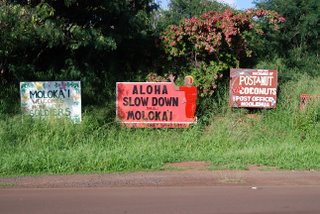
Typical Moloka`i wit:
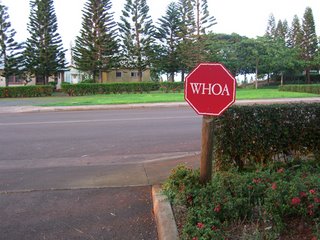
The most famous sight on Moloka`i is Kalaupapa, once home to the leper colony tended to by reknowned Father Damien. This was also my first stop on the island, and getting to it required my first ride on a mule!
Look at this jackass (and he’s riding a mule!):
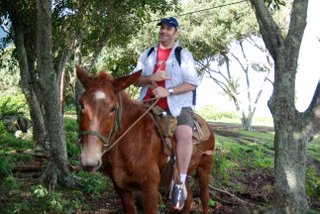
In 1866—long before the disease was understood or treatable—King Kamehameha V decreed that all people with leprosy would be forced into isolation. Kalaupapa seemed to be perfect: a lonely peninsula on the north coast of Moloka`i, cut off from the rest of the island by the sea on three sides and the world’s highest sea cliffs on the fourth. The only way to get there is on foot or mule down 2000-foot cliffs. This picture (which I took later from the plane to Maui) clearly shows how isolated it is, like a little tongue or geological afterthought:
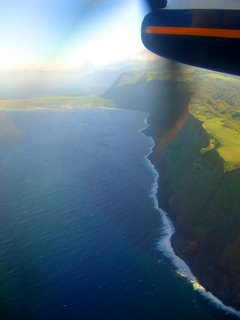
It’s a beautiful spot, but a tragic one. Yes, people still get leprosy—but it’s called Hansen’s disease now and is treatable. Most people are naturally immune to it, and it’s only infectious in its early stages. But before that was understood, anyone with the disease in Hawaii was forcibly taken from their home and family and dropped here. This tragic policy was continued by the US government and only ended in 1969. The peninsula is now a National Monument but remains home to about 57 patients who stayed here by choice after 1969, and can stay here until they die. Then that will be the last of the Kalaupapa lepers.
On the way down:
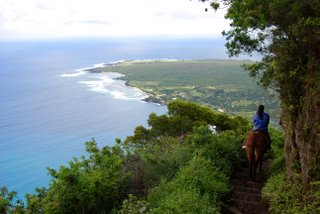
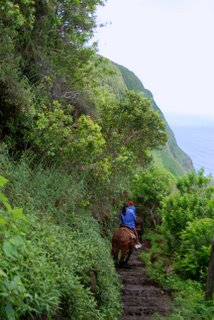
Although it was a bit of a rainy day (uncommon here), that did mean we got to see quite a few of what the ancient Hawaiians considered a sacred and powerful symbol…the rainbow:
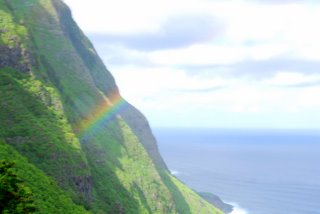
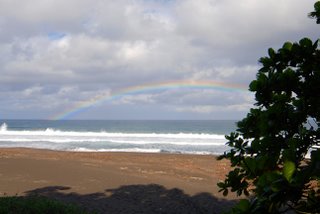
Down on the peninsula, looking back at the sheer cliffs we’d just precipitously scaled on our asses (that joke never gets old):
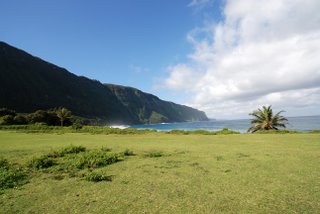
At the bottom, we met up with people who had either hiked in on foot or came by small plane (lazy losers) for the tour. Because it is still home to a few patients, there is only one tour a day, during which they tend to stay out of sight. In a clunky old school bus we saw several aspects of life at Kalaupapa. The tour ended at the east end of the peninsula (Kalawao), which offers another striking view of the cliffs:
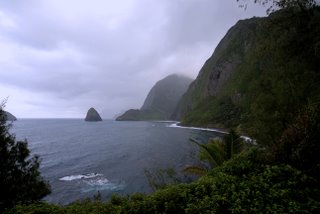
The patients were traditionally cared for by Catholic missionaries who devoted their lives to helping them over the years. Most famous was the Belgian Father Damien, who himself contracted the disease and died here. He is currently on track to sainthood. Mother Marianne was another revered caretaker.

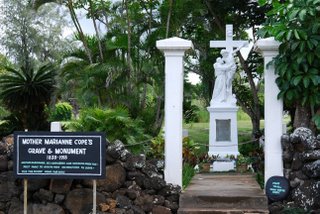
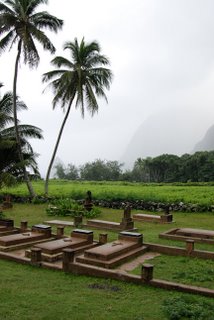
Then it was back up the trail. My mule, Aleka (Hawaiian for “Alexander”), kept stopping on the way down to eat stuff he found. Then on the way up he kept putting the moves on a little filly named Kaikaina (“Sister”):
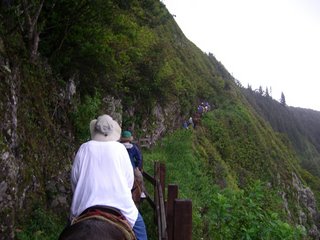
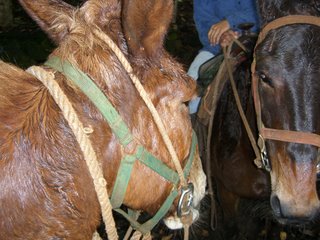
While on Moloka`i I stayed at the Beach Village at Moloka`i Ranch. This was like upscale camping in little tents. Actually, you got TWO tents and an outhouse!
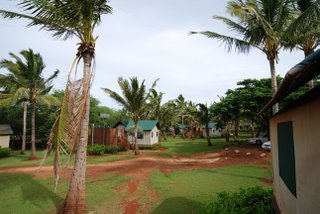
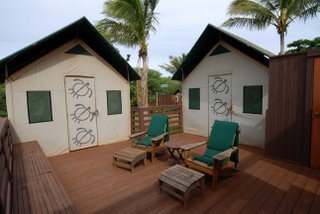
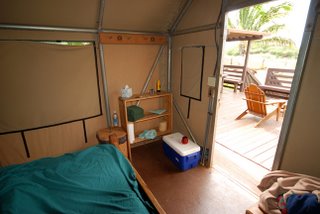
The bathroom portion had no roof:
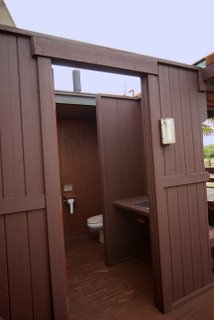
But there was a hammock out back:
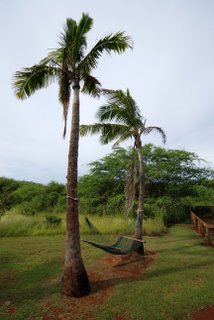
Yes, it was called the Beach Village because it is on a beach (Kaupoa Beach). At night all you could hear was the waves on the shore and the wind in the palms (and the deer…who knew deer make noise?!):
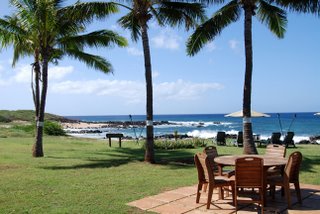
One morning I awoke to find this wild turkey stalking my tent. I think he was still mad about Thanksgiving:
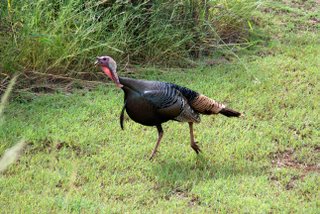
The main town on Moloka`i is Kaunakakai. It’s all of three blocks long:
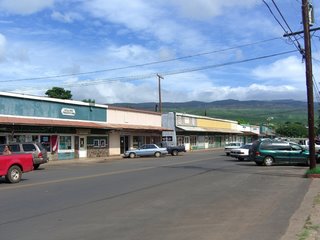
On another day, I drove out to the east end of the island. This is the “rainy” side, with lush forests and waterfalls, dominated by the inaccessible Halawa Valley:
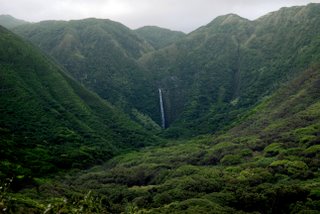
View of Maui across the way:
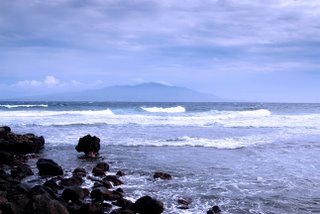
Moloka`i residents are known for their signs. I’m not 100% sure what it’s all about, but they were certainly up in arms about something called La`au point and leaving it alone:
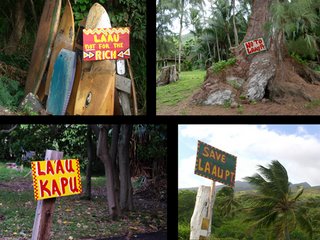
Random roadside sight:
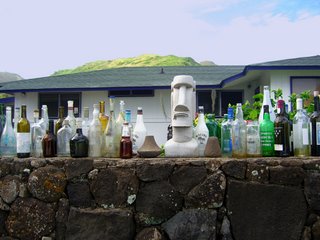
I wandered through the Kapuaiwa Coconut Grove. A Hawaiian king had once planted 1000 coconut palms here. Seems to me quite a few are left. The “Watch out for falling coconuts” sign seems funny at first, but once you’re under them you realize that it is actually pretty scary—they are very tall and a falling coconut could easily kill a man!
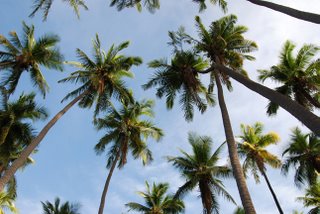
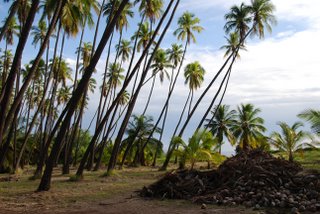
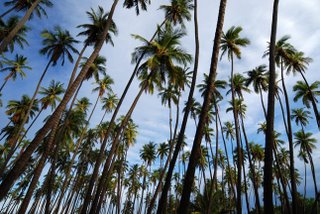
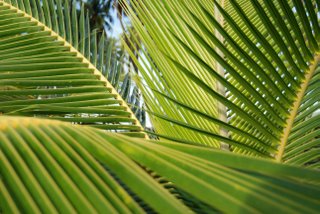
Sunset (and some friends) on the beach:
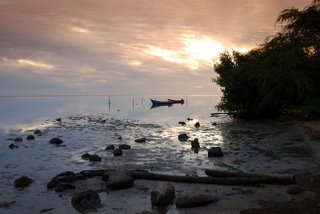
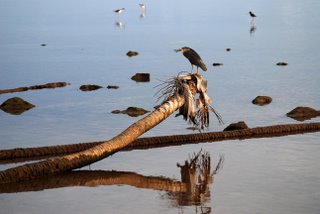
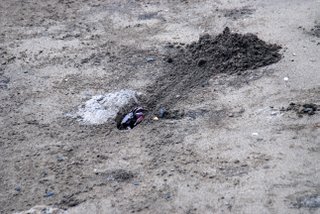
There were a lot of beautiful flowers on Moloka`i:
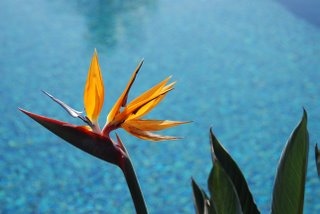
Gee, should I check out the view of a National Monument and memorial to human kindness and suffering…or a rock shaped like a giant schlong?:
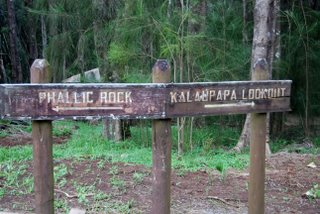
For those of you who chose the latter, here it is (the offerings on it are from women who seek fertility from the gods):
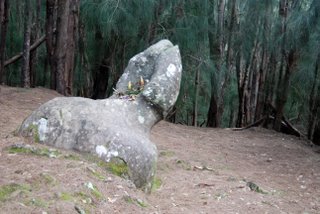
In the town of Hoolehua (such a fun name to say—c’mon, try it!) the post woman has for years collected fallen coconuts and provided them to tourists (in a program she calls “Post-A-Nut”. In the post office you can color and address the coconuts and then she’ll mail them. You only have to pay the postage. Here are a few I sent to my nieces:
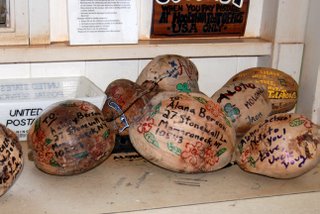
This sign hung over the toilet in the mule ride HQ:

I was entertained by this particular brand of toilet stall manufacturer:

I’ve said it for years: Just Say “Malama Manae Aole!” to drugs!
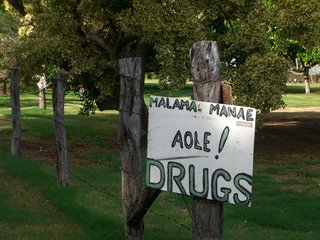
First of all, this being December 7th, I would like to point out a second national tragedy that occurred at Pearl Harbor while I was actually there:

But I digresss…
The flight to Moloka`i is just 20 minutes on a small plane; but from the time you board the flight you know you’re headed someplace different. Although there are only about 30 people on the flight, many of them know one another (and the flight attendant) well enough to share stories and pictures and family updates.
Moloka`i is one of the smallest islands, and the least visited by tourists. In fact, just about any hotel on Waikiki has more rooms than the entire island of Moloka`i. There isn’t even a single traffic light. But it’s called “The Friendly Island” for a reason: the “Aloha spirit” pervades here more than anywhere else. Everyone waves and smiles, whether passing on the street or on the highway. It’s also the most “Hawaiian” of the islands: about half the people here have Hawaiian blood, and many speak Pidgin—a hybrid of English and the Hawaiian language. It’s the birthplace of the hula, and the ancient Hawaiians thought it the most spiritual of all the islands: there are countless ruins of Heiau (temples). Life is slow and relaxed. A sign near the tiny airport says it all: “Slow down…this is Moloka`i”:

Typical Moloka`i wit:

The most famous sight on Moloka`i is Kalaupapa, once home to the leper colony tended to by reknowned Father Damien. This was also my first stop on the island, and getting to it required my first ride on a mule!
Look at this jackass (and he’s riding a mule!):

In 1866—long before the disease was understood or treatable—King Kamehameha V decreed that all people with leprosy would be forced into isolation. Kalaupapa seemed to be perfect: a lonely peninsula on the north coast of Moloka`i, cut off from the rest of the island by the sea on three sides and the world’s highest sea cliffs on the fourth. The only way to get there is on foot or mule down 2000-foot cliffs. This picture (which I took later from the plane to Maui) clearly shows how isolated it is, like a little tongue or geological afterthought:

It’s a beautiful spot, but a tragic one. Yes, people still get leprosy—but it’s called Hansen’s disease now and is treatable. Most people are naturally immune to it, and it’s only infectious in its early stages. But before that was understood, anyone with the disease in Hawaii was forcibly taken from their home and family and dropped here. This tragic policy was continued by the US government and only ended in 1969. The peninsula is now a National Monument but remains home to about 57 patients who stayed here by choice after 1969, and can stay here until they die. Then that will be the last of the Kalaupapa lepers.
On the way down:


Although it was a bit of a rainy day (uncommon here), that did mean we got to see quite a few of what the ancient Hawaiians considered a sacred and powerful symbol…the rainbow:


Down on the peninsula, looking back at the sheer cliffs we’d just precipitously scaled on our asses (that joke never gets old):

At the bottom, we met up with people who had either hiked in on foot or came by small plane (lazy losers) for the tour. Because it is still home to a few patients, there is only one tour a day, during which they tend to stay out of sight. In a clunky old school bus we saw several aspects of life at Kalaupapa. The tour ended at the east end of the peninsula (Kalawao), which offers another striking view of the cliffs:

The patients were traditionally cared for by Catholic missionaries who devoted their lives to helping them over the years. Most famous was the Belgian Father Damien, who himself contracted the disease and died here. He is currently on track to sainthood. Mother Marianne was another revered caretaker.



Then it was back up the trail. My mule, Aleka (Hawaiian for “Alexander”), kept stopping on the way down to eat stuff he found. Then on the way up he kept putting the moves on a little filly named Kaikaina (“Sister”):


While on Moloka`i I stayed at the Beach Village at Moloka`i Ranch. This was like upscale camping in little tents. Actually, you got TWO tents and an outhouse!



The bathroom portion had no roof:

But there was a hammock out back:

Yes, it was called the Beach Village because it is on a beach (Kaupoa Beach). At night all you could hear was the waves on the shore and the wind in the palms (and the deer…who knew deer make noise?!):

One morning I awoke to find this wild turkey stalking my tent. I think he was still mad about Thanksgiving:

The main town on Moloka`i is Kaunakakai. It’s all of three blocks long:

On another day, I drove out to the east end of the island. This is the “rainy” side, with lush forests and waterfalls, dominated by the inaccessible Halawa Valley:

View of Maui across the way:

Moloka`i residents are known for their signs. I’m not 100% sure what it’s all about, but they were certainly up in arms about something called La`au point and leaving it alone:

Random roadside sight:

I wandered through the Kapuaiwa Coconut Grove. A Hawaiian king had once planted 1000 coconut palms here. Seems to me quite a few are left. The “Watch out for falling coconuts” sign seems funny at first, but once you’re under them you realize that it is actually pretty scary—they are very tall and a falling coconut could easily kill a man!




Sunset (and some friends) on the beach:



There were a lot of beautiful flowers on Moloka`i:

Gee, should I check out the view of a National Monument and memorial to human kindness and suffering…or a rock shaped like a giant schlong?:

For those of you who chose the latter, here it is (the offerings on it are from women who seek fertility from the gods):

In the town of Hoolehua (such a fun name to say—c’mon, try it!) the post woman has for years collected fallen coconuts and provided them to tourists (in a program she calls “Post-A-Nut”. In the post office you can color and address the coconuts and then she’ll mail them. You only have to pay the postage. Here are a few I sent to my nieces:

In Part 3 of the Aloha Blog, you'll get to see the results of my first official job as a wedding photographer as Clare and GM get “Mauied”!! In the meantime, a few parting shots...
This sign hung over the toilet in the mule ride HQ:

I was entertained by this particular brand of toilet stall manufacturer:

I’ve said it for years: Just Say “Malama Manae Aole!” to drugs!



1 Comments:
thank you ...... nice ..... very interesting .......
this really helped me ......... good luck .......
visit also my website ...... please .......
Gejala Penyakit Sipilis
Penyebab Gatal Di Selangkangan
Obat Untuk Penyakit Kanker
Pengobatan Penyakit Diabetes
Pengobatabn Penyakit Sipilis
Apa Penyakit Sipilis
By obat denature, at 4:51 PM
obat denature, at 4:51 PM
Post a Comment
<< Home